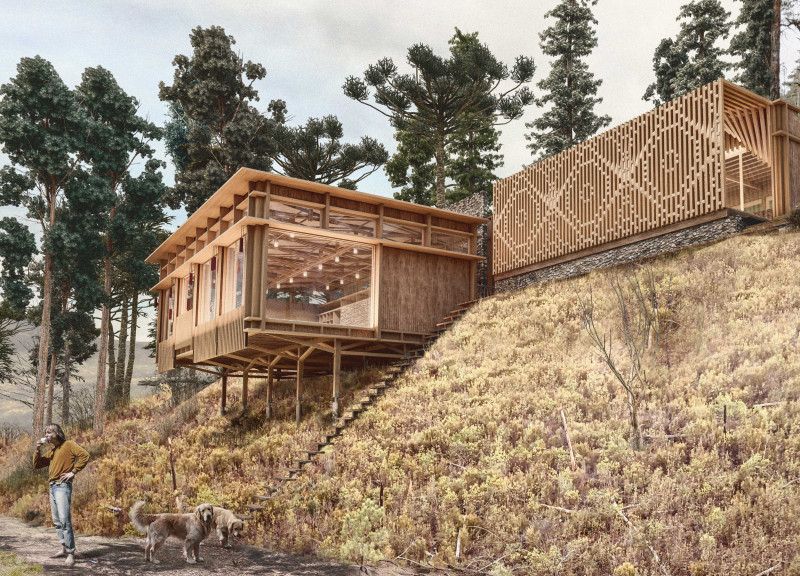5 key facts about this project
The layout consists of various zones, including meditative areas, workout spaces, and communal gathering spots, effectively catering to diverse activities while promoting a holistic approach to wellness. The structures are elevated to enhance visibility and connection with the surrounding nature, ensuring that natural light plays a vital role in the user experience.
Sustainable Material Usage and Structural Design
The project employs local timber for structural framing, which not only supports ecological responsibility but also enhances the engagement with the local community. Recycled and repurposed materials are utilized throughout, reducing environmental impact. Natural stone is featured prominently, creating aesthetic continuity and structural stability.
Large glass facades promote transparency, allowing users to connect visually with nature while benefiting from ample daylight. The use of sustainable systems, including solar panels and rainwater harvesting, aligns with modern energy-efficient practices while enhancing the site’s ecological value.
Unique Design Approaches and Integration with Landscape
One of the notable features of the "Bridge to Meditation" is its incorporation of architectural elements that promote meditation and reflection in everyday interactions. The structural forms are designed to evoke calm through smooth lines and natural patterns, such as those inspired by mandala designs. Floor-to-ceiling windows facilitate continuity between indoor and outdoor environments, ensuring that visitors can experience the tranquility of their natural surroundings.
The landscaping prioritizes native vegetation, promoting biodiversity while ensuring erosion control. This focus on integrating architecture with the natural environment effectively emphasizes a commitment to sustainability and ecological harmony. Through careful spatial organization, the design creates a balance between communal areas and individual spaces, allowing for both social interaction and personal retreat.
Examining architectural plans, sections, and other design elements of the "Bridge to Meditation" offers deeper insights into its thoughtful design and functional versatility. Exploring these architectural details will provide a comprehensive understanding of how the project uniquely addresses the need for mindfulness and ecological sustainability.


























